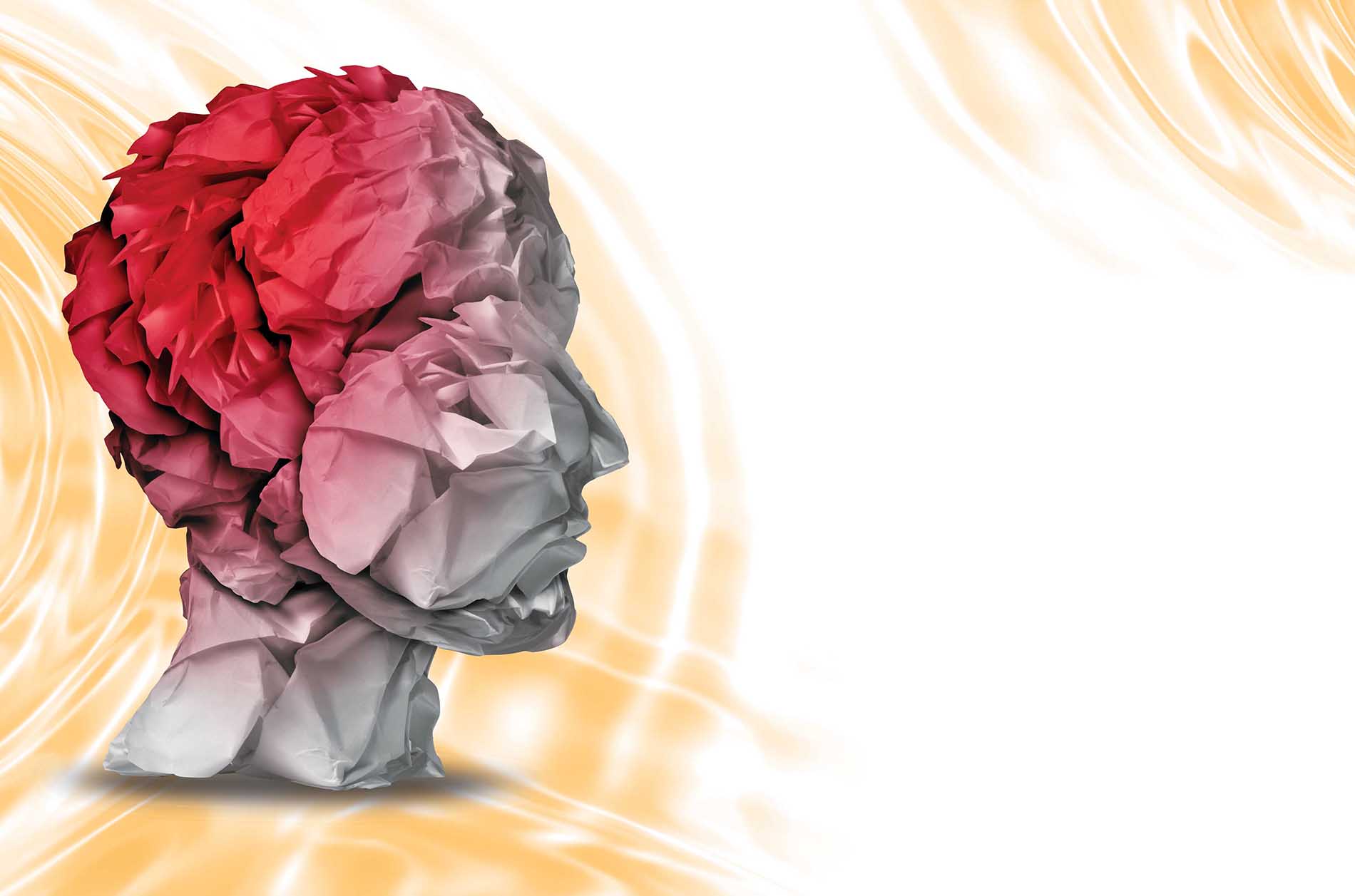
the go-to concussion management resource
Whether you are a coach, the parent of an athlete, or sports fan, the term “concussion” is one you probably have heard a lot lately. You might even have been enlightened about this serious injury by a Springfield College exercise science and sport studies faculty expert who
has appeared in the local or national media.
According to the Centers for Disease Control and Prevention, a concussion is “a complex pathophysiological process affecting the brain, induced by traumatic biomechanical forces secondary to direct or indirect forces to the head. Disturbance of the brain function is related to neurometabolic dysfunction, rather than structural brain injury.”
Another definition for concussion, according to the Concussion Legacy Foundation, is “a serious injury to the brain resulting from the rapid acceleration or deceleration of brain tissue within the skull. Rapid movement causes brain tissue to change shape, which can stretch and damage brain cells. This damage also causes chemical and metabolic changes within the brain cells, making it more difficult for cells to function and communicate.”
But no matter how you define it, the awareness and concern about this serious injury is growing.
The most common reported symptoms of concussions include: headache, feeling slowed down, difficulty concentrating, dizziness, fogginess, fatigue, visual blurring/double vision, light sensitivity, memory dysfunction, and balance problems.
Concussions on the Rise
Using just one sport, youth soccer, as an example, statistics from the Journal of Pediatrics show that there was a 1,600 percent surge in the number of head injuries in the 24-year period from 1990-2014.
In a recent interview with WFSB–TV, Hartford, Conn., M. Susan Guyer, DPE’03, professor and chair of the Department of Exercise Science and Sport Studies, said: “There has been a significant rise in participation in soccer, which has contributed to the increase in head injuries, but education about injuries has also improved, so kids are checked out more frequently and more quickly when they have head injuries. The increase is a trifecta: more kids are playing soccer, we are more aware of concussions, and athletes today are more aggressive, which leads to injuries.”
National and local media turn to Springfield College faculty as a reliable source for expert information on concussions for good reason. The athletic training faculty is on the forefront of the prevention and management of concussions. In fact, both Head Athletic Trainer Barclay Dugger, G’96, and Guyer are ImPACT Trained Athletic Trainers (ITAT). ITAT is advanced training provided and developed by ImPACT Applications, Inc., that certifies athletic trainers to become a go-to resource in their communities for leading-edge concussion education and awareness.
Springfield College-educated athletic trainers are highly qualified to evaluate, diagnose, treat, and play a key role in concussion management. They oversee most concussions to Springfield College student-athletes in-house, and work with Baystate Health Sport Medicine Concussion experts on more complicated injuries. The sophisticated prevention and treatment efforts/protocols they use with our athletes are tailored completely differently than they were just a few years ago.
There are interesting new developments in the diagnosis of concussions that are gaining notice. Up until now, when someone was suspected of suffering from a concussion, the only concrete test was a CT scan, which involves high amounts of radiation. Now, there is a relatively new Food and Drug Administration-approved blood test that can determine within 12 hours if there is bleeding in the brain, and can make a rapid diagnosis of a concussion. The test measures proteins in the blood that are released when bleeding in the brain happens, and determines if there are enough of those proteins to warrant an actual CT scan, which could indicate inter-cranial bleeding. The ability to predict if patients have a low chance of brain bleeding can help doctors decide if a CT scan is necessary. No bleeding means no need for a CT scan, saving hundreds of thousands of dollars in test costs, as well as protecting people from harmful radiation.
Another test, which identifies five molecules that researchers have found in saliva, can help identify concussion symptoms in children, teens, and younger adults. According to a new study, published in JAMA Pediatrics (November 2017), the molecules—known as microRNAs—influence the activity of protein in the body and are easily measured in bodily fluids, including saliva.
With millions of sports- and recreation-related concussions occurring each year in the United States, and 10 percent of all contact sport athletes sustaining concussions yearly, there hopefully will be new innovations in the prevention, diagnosis, and treatment of concussions. Whenever that happens, you can be sure that Springfield College athletic trainers will be at the forefront—and you might even see them talking about it in the media.
Editor’s note: World-renowned concussion expert Robert Cantu, MA, MD, FACS, FACSM, clinical professor in the Boston University School of Medicine Department of Neurosurgery, will deliver the keynote address at the Charles M. Tipton ’52 Alumni College in Exercise Science, on Friday, Oct. 12, 2018, on the Springfield campus. Information is available on page 31 or at springfield.edu.
SAVE THE DATE
Charles M. Tipton ’52
Alumni College in Exercise Science
Friday, OCT. 12, 2018
The theme of Alumni College will be concussions. You’ll hear from authorities in the field, featuring world-renowned expert on concussions, Dr. Robert Cantu. Topics will range from trends in the debate on youth playing contact sports to the psychological impact of concussion and clinical trajectory, diagnosis, and treatment.
CEUS, CMES, AND PDPS WILL BE OFFERED.
RESERVE YOUR ROOM
Make your reservations by Sept. 11, 2018,
at the following hotels:
Hampton Inn in downtown Springfield,
(413) 310-2300
Hilton Garden Inn in downtown Springfield,
(413) 866-8000
We look forward to seeing you there!
Visit springfield.edu for additional information.
- End



